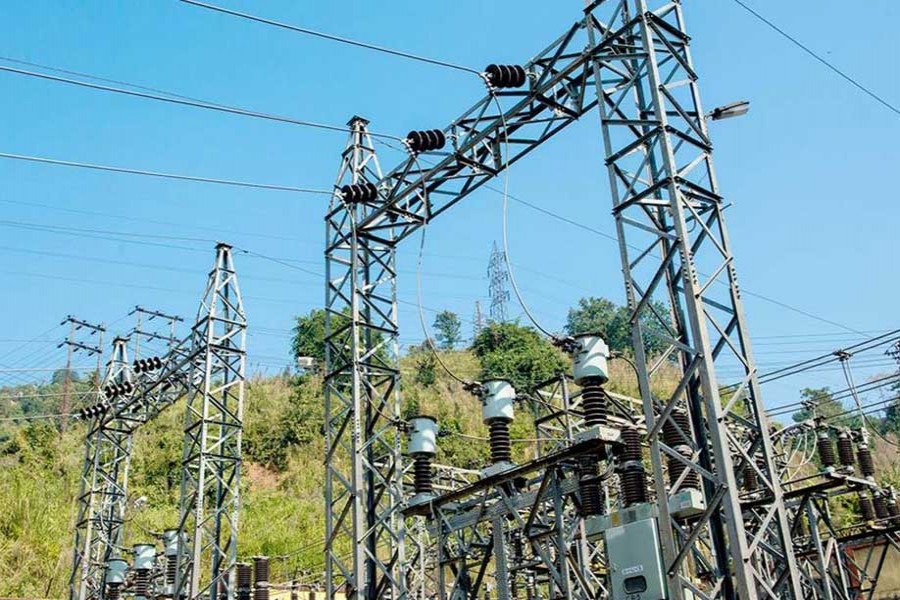The demand for electricity rises in the summer, especially during the monsoon season, but falls during the winter in Bangladesh. The opposite is the case in Nepal and Bhutan where electricity generation peaks during the monsoon, thanks to water availability for their hydroelectricity plants, and decreases during the winter.
This seasonal variation in the generation of and demand for electricity leaves scope for a two-way power trade between Bangladesh and Bhutan and Nepal. Bangladesh often suffers from power deficiency during the summer but its power plants remain under-utilised during the winter. Such period of power shortage is the winter for Bhutan and Nepal.
Since the three countries do not share any border with each other, other than having common borders with India, "the transmission network lines carrying this energy must pass through India," says a paper titled "Cross-border electricity trade in the Bangladesh-Bhutan-India-Nepal (BBIN) Region: A cost-based market perspective". Jointly written by Jagruti Thakur, Mohammad Reza Hesamzadeh and Frank Wolak under Applied Research Programme, the paper argues, "A multi-country, market-based approach for electrical energy trade offers an opportunity to unlock the potential for efficient use of generation resources in the BBIN Region to meet the annual hourly demands in these four countries."
The authors have proposed a cost-based CBET (cross-border energy trade) trading market for the BBIN region that clears before the domestic market clears in any country of the BBIN region. They suggest this market should be run in advance of the operation of the wholesale markets in any of the BBIN countries.
Already, Bangladesh is importing electricity from India's West Bengal state under bilateral arrangements and the imports have increased over the years and may increase further in the coming years as per deals. However, there is certain possibility of exporting electricity to some other bordering states of India's northeast where demand may rise. Bhutan and Nepal too have bilateral power trading arrangements with India.
In the event of power trade between Bangladesh and Nepal and between Bangladesh and Bhutan, it is not possible to do so without crossing Indian territory. So, India can play a critical role in establishing a regional power grid for electricity trade involving the four countries of the BBIN sub-region.
Also, India's transmission infrastructure, relatively developed in the region, may support an international electricity trade regime that can benefit all the parties. India, as the country which has borders with three other BBIN countries, may offer itself as a model for regional energy cooperation.
In fact, development of electricity interconnection and trade in South Asia has been envisaged when leaders of the South Asian Association for Regional Cooperation (SAARC) announced the concept of the SAARC Energy Ring in 2004. Although progress towards the regional energy grid is slow, a possible BBIN grid connectivity may help attain the greater goal, especially in the context of international agreements on sustainable development and climate change.
The benefits of power grid interconnection in the region are manifold as national policymakers face an "energy trilemma" of ensuring energy security, affordability and sustainability, according to an ESCAP study on "Integrating South Asia's Power Grid for a Sustainable and Low Carbon Future". Greater connectivity, it says, can help to (a) deliver an increased supply of electricity, (b) provide enhanced energy security by diversifying supply, (c) reduce costs through arbitrage and economies of scale, (d) tap into underexploited energy resources such as hydropower and (e) allow greater use of variable renewable energy through balancing generation over larger pooled areas.
The study report adds, an interconnected grid covering the sub-region is an essential enabler for power generation infrastructure and the development of cross-border electricity trade. It has been pointed out that the direct benefits of full power grid interconnection could reach $9.0 billion each year in direct savings and reduce GHG (green house gas) emissions by more than 9.0 per cent per annum compared with business as usual, without accounting for social and environmental benefits. Grid interconnection in the BBIN sub-region can not only generate direct economic benefits for all participating countries through both exporting and importing electricity, but also help utilise 'enormous untapped potential for renewable energy at low cost from hydropower, solar and wind'.
Since Bangladesh, Bhutan, Nepal and bordering states of India are still in an economic transition in terms of poverty reduction, infrastructure building and industrialisation, a sub-regional power grid remains a viable option in the foreseeable future. It's important that interests of people in each country and their projected demand need to be taken into account while public-private partnership in the power trade should be ensured for the sake of operational viability through commercial benefits.
This article has been prepared as part of a BEI media fellowship with support of SARI/El Project Secretariat under IRADe and USAID.


